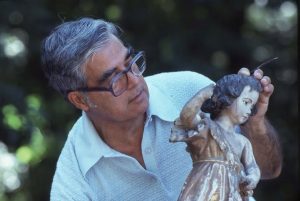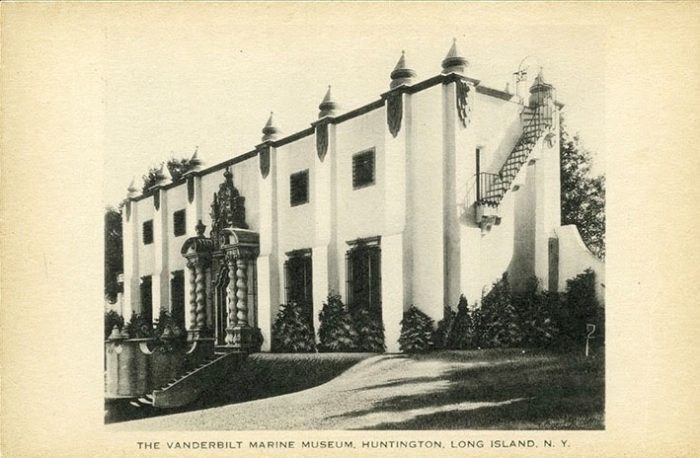New exhibit, ‘Preserving Eagle’s Nest,’ opens at the Vanderbilt Museum
Why should we care about historic houses that have been turned into museums? How can these inert structures speak to us and how, a century or two later, might their histories and the lives of their famous inhabitants be relevant to contemporary life, and to museum visitors?
These are a few of the questions raised by Preserving Eagle’s Nest: Labor and the Aesthetics of Stasis, the newest exhibition at the Suffolk County Vanderbilt Museum, which opens to the public on Sunday, September 18, in the Lancaster Gallery. The presentation explores the preservation of Eagle’s Nest, the summer estate of William K. Vanderbilt II (1878-1944) one of the heirs to a powerful railroad and shipping empire.
Paul Rubery, the Vanderbilt Museum’s Director of Curatorial Affairs, created the exhibition after considering the purpose and future of historic house museums and examining hundreds of artifacts and documents, as well as the century-old buildings under his care.

Preserving Eagle’s Nest explores the architectural significance of the estate and considers the skill, labor, expertise, and care invested in maintaining the appearance of the property and emphasizes the processes and outcomes of preservation initiatives.
“If historic house museums hope to communicate their value to contemporary society,” Rubery said, “they must develop a new language to describe their activities.
“Specifically, these institutions must articulate how, in remaining static, the buildings under their stewardship convey something essential about the historical process. To do so, they must direct their attention to the basic unit of historical experience and understanding: time.”
Questions about temporality present conceptual issues for the interpretation of house museums. In the mid-twentieth century, many private estates were converted into museums when social historians popularized a historiographic method centered on the role places played in forming the biographies of “great individuals,” Rubery said.
These scholars believed that, if the public was presented with the life of a person at a specific moment in time, they would form an intimate connection with the past in a way that supports the development of character and virtue. Today, our fondness for explaining historic events through biography has largely waned — and with that, the school of social history — leaving behind countless mummified homes, farmsteads, and other structures that no longer serve their intended purpose.
Preserving Eagle’s Nest explores this theme through artifacts and documents. It examines the historic house museum’s language of time by concentrating on the broken, damaged, and decayed aspects of the Vanderbilt Museum’s collections and grounds. The exhibit also examines the time and labor invested in preserving the historic appearance of the Museum and finds value in the multigenerational care and expertise given to the project.
By focusing on the tension that develops between degradation and preservation, Preserving Eagle’s Nest directs our collective interest toward questions of temporality, effort, and historical stasis, Rubery said.
This exhibition is made possible by the generosity of Eric and Laura Gerde, Milcon Construction Corporation, Farrell Fritz, P.C.; People’s United Bank; PFM Asset Management; and H2M Architects + Engineers.
The Suffolk Cound Vanderbilt Museum, 180 Little Neck Road, Centerport presents Preserving Eagle’s Nest through Dec. 4.
Viewing hours for the fall are Thursday, Friday, Saturday, and Sunday from 11 a.m. to 5 p.m. For more information, call 631-854-5579 or visit www.vanderbiltmuseum.org.







